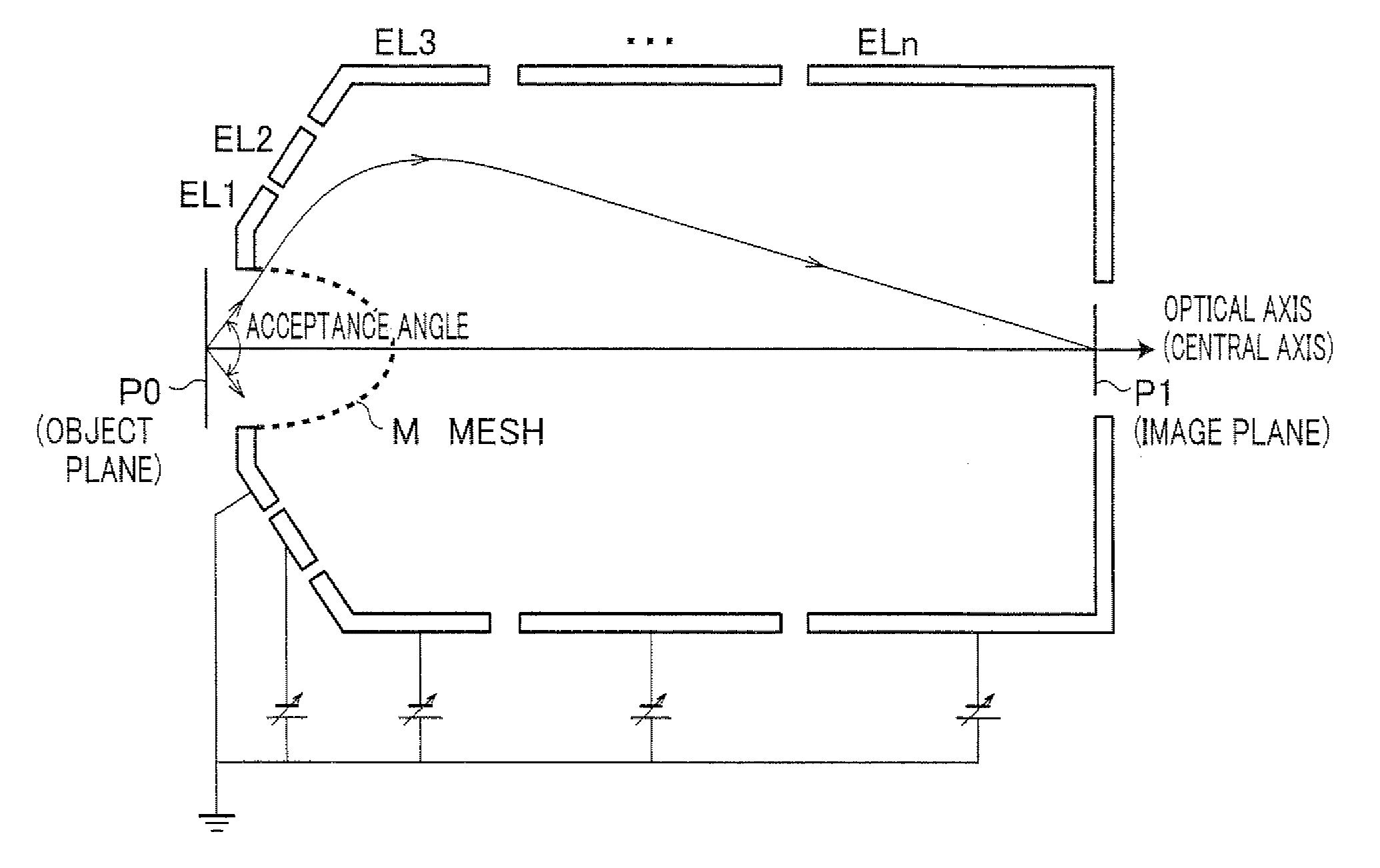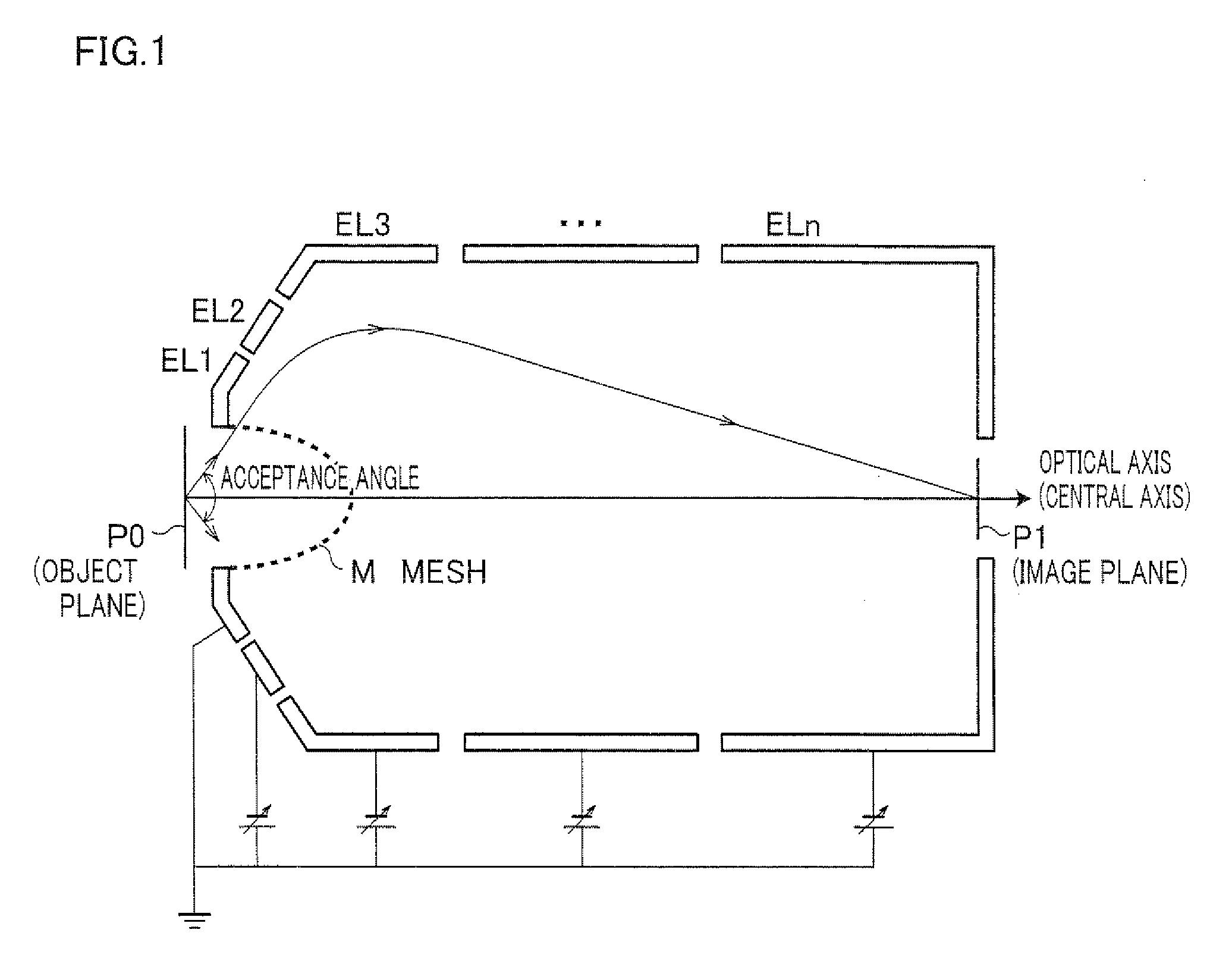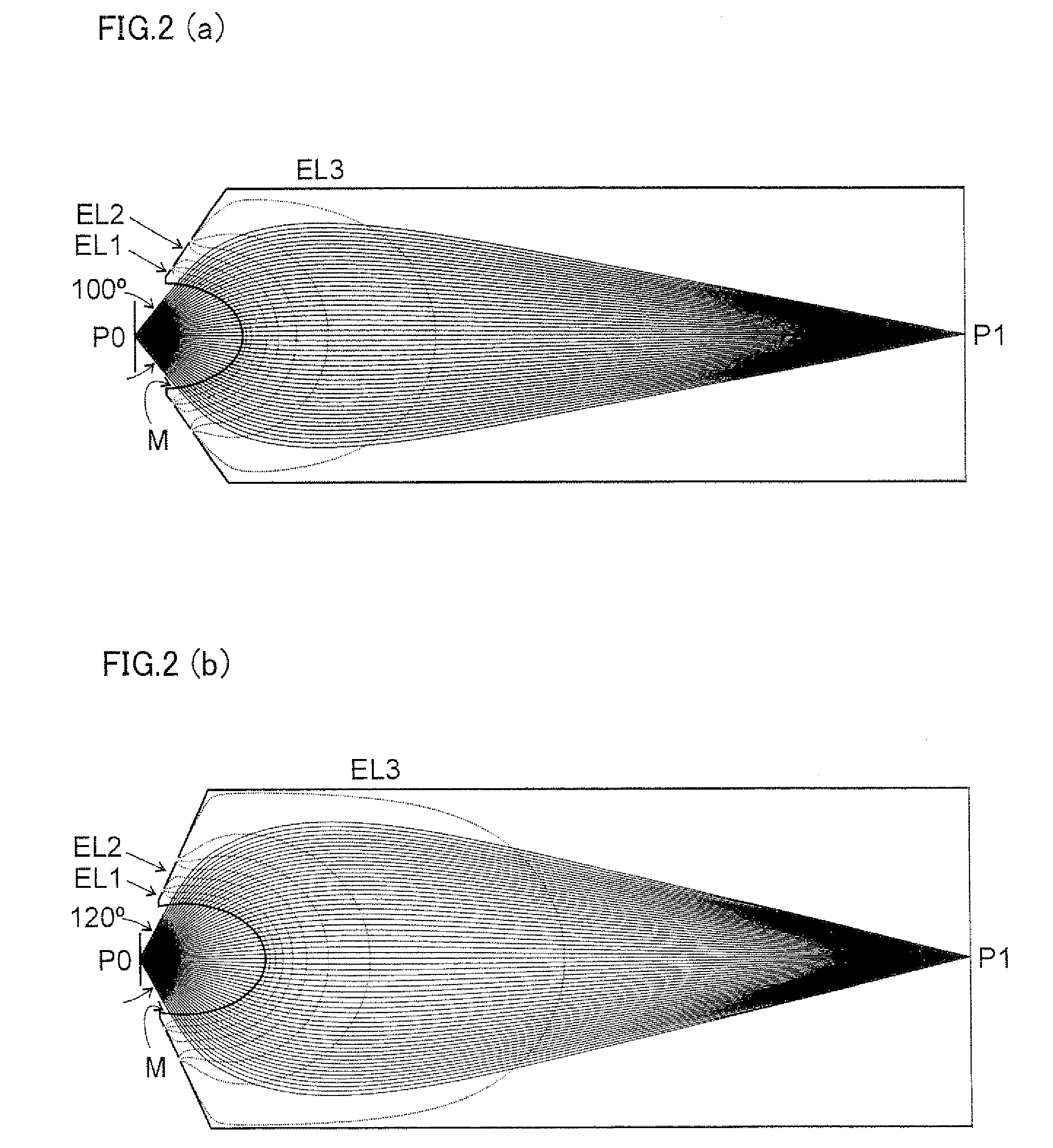Spherical aberration correction decelerating lens, spherical aberration correction lens system, electron spectrometer, and photoelectron microscope
a technology of spherical aberration and lens system, which is applied in the direction of instruments, magnetic discharge control, and beam deviation/focusing by electric/magnetic means, can solve the problems of insufficient atomic arrangement analysis, difficult to converge the beam, and the divergence angle of the beam is not sufficiently small, so as to improve the sensitivity and function of the photoelectron microscope
- Summary
- Abstract
- Description
- Claims
- Application Information
AI Technical Summary
Benefits of technology
Problems solved by technology
Method used
Image
Examples
example 1
[0172]Herein, with reference to FIG. 11 to FIG. 14, Example 1 of the spherical aberration correction lens system of the present invention is described as follows. FIG. 11 is a cross sectional view schematically illustrating a spherical aberration correction lens system of Example 1. Note that, a curve in this figure indicates trajectories of a beam emitted from an object plane.
[0173]As illustrated in FIG. 11, the spherical aberration correction lens system of Example 1 includes a first lens E1 and a second lens E2.
[0174]The first lens E1 is constituted of the aforementioned spherical aberration correction decelerating lens of the present invention. In the spherical aberration correction decelerating lens, at least one of (i) a ratio of a major axis to a minor axis in a mesh M, (ii) a voltage applied to each electrode, (iii) a distance from an object plane P0 to the mesh M, and (iv) a length of each electrode is adjusted so that a negative spherical aberration occurs in an image plan...
example 2
[0186]With reference to FIG. 15(a) and FIG. 15(b), Example 2 of the spherical aberration correction lens system of the present invention is described as follows. FIG. 15(a) is a cross sectional view schematically illustrating a spherical aberration correction lens system of Example 2. FIG. 15(b) is a graph illustrating a relationship between an incident angle of a beam and a spherical aberration on the image plane P1 of the first lens E1 and a relationship between an incident angle of a beam and a spherical aberration on the image plane P2 of the second lens E2 in the spherical aberration correction system of Example 2. Note that, a continuous curve in this figure indicates trajectories of a beam emitted from an object plane.
[0187]As illustrated in FIG. 15(a), the spherical aberration correction lens system of Example 2 includes a first lens E1 and a second lens E2. The spherical aberration correction lens system of Example 2 is different from the spherical aberration correction len...
example 3
[0190]With reference to FIG. 16, Example 3 of the spherical aberration correction lens system of the present invention is described as follows. FIG. 16 is a cross sectional view schematically illustrating the spherical aberration correction lens system of Example 3. Note that, a curve in this figure indicates trajectories of a beam emitted from an object plane.
[0191]As illustrated in FIG. 16, the spherical aberration correction lens system of Example 3 includes a first lens E1 and a second lens E2. The spherical aberration correction lens system of the present Example is different from the spherical aberration correction lens system of Example 1 in an order in which the first lens EL1 and the second lens EL2 are arranged. That is, the first lens EL1 is constituted of at least one electron lens, and the second lens EL2 is constituted of the aforementioned spherical aberration correction decelerating lens of the present invention. In Example 3, the first lens EL1 is configured so as t...
PUM
| Property | Measurement | Unit |
|---|---|---|
| acceptance angle | aaaaa | aaaaa |
| acceptance angle | aaaaa | aaaaa |
| distance | aaaaa | aaaaa |
Abstract
Description
Claims
Application Information
 Login to View More
Login to View More - R&D
- Intellectual Property
- Life Sciences
- Materials
- Tech Scout
- Unparalleled Data Quality
- Higher Quality Content
- 60% Fewer Hallucinations
Browse by: Latest US Patents, China's latest patents, Technical Efficacy Thesaurus, Application Domain, Technology Topic, Popular Technical Reports.
© 2025 PatSnap. All rights reserved.Legal|Privacy policy|Modern Slavery Act Transparency Statement|Sitemap|About US| Contact US: help@patsnap.com



